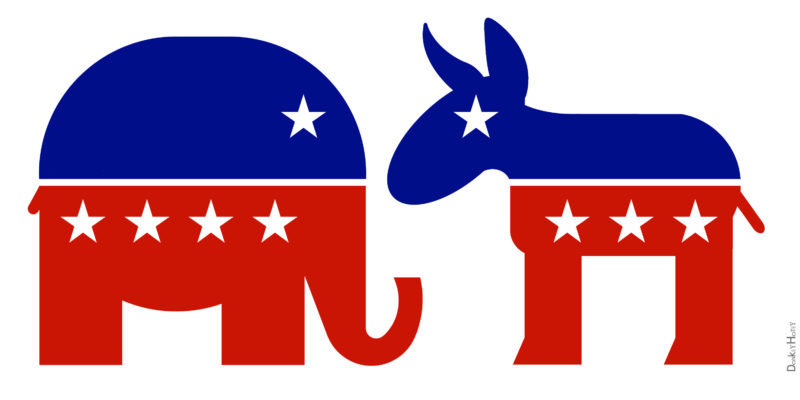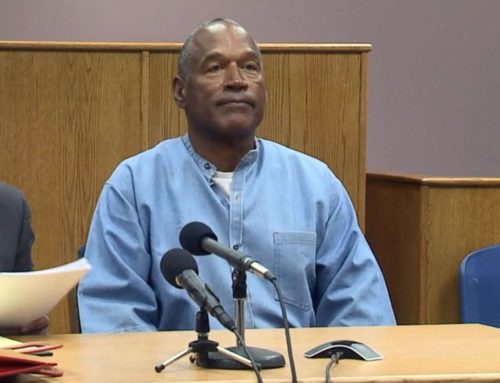Our Legal Advocate, Andrew McKenna, took a look at each of the presidential candidates thoughts on our criminal justice system. Below is a recap of each candidate’s current thoughts of reform.
In an unprecedented turn of events, criminal justice and prison reform are key topics in the presidential race this year. But what makes this noteworthy, is not what the candidates from the two parties don’t agree on, but what they actually do agree on: we have too many people behind bars in this country. Here we will consider the candidates’ plans to correct this problem as we march towards November’s General Election.
While the United States accounts for less than 5 percent of the world’s population, it has 20 percent of the world’s prison population. One factor responsible for this is “tough on crime” legislation passed on President Clinton’s watch in 1994, which he now regrets.
The Violent Crime Control and Law Enforcement Act of 1994 created harsh penalties for major crimes, but also for low level, non violent offenses as well. The Act was largely a reactionary measure stemming from the violence of the “crack wars” in the late 1980s and early 1990s. Cries for reform were heard from communities across the country plagued by the violence.
Unfortunately, despite the fact that crime has fallen in recent decades, our prison population has grown, and is now just recently leveling out at a shocking 2.2 million people incarcerated. But the damage is done. According to the National Research Council the country’s prison population, counting both state and federal systems, was seven times what it was in 1973.
Not surprisingly, black communities have felt a disproportionate brunt of the stiff sentencing laws, especially given the sentencing disparities for crack cocaine and powder cocaine under Title 21 of the United States Criminal Code and the United States Sentencing Guidelines. One in twelve black men from age 25 to 54 is incarcerated, while one in sixty non-black men are for this age range. This disparity between the two forms of cocaine and the consequences for possession and distribution was somewhat mitigated by the Fair Sentencing Reform Act of 2010, but still more needs to be done.
Equally troubling is the recidivism problem. Recidivism rates among federal offenders are nearly 45 percent while state offenders recidivate at a percentage closer to 65. This is largely because inmates, particularly on the federal level, receive little or no job training or marketable skills while incarcerated. They are simply released to the streets with the same set of options they had pre-arrest and unfortunately, in many cases, the same core value systems too.
So we’re down to 4 viable candidates for the presidency: Clinton, Sanders, Trump, and Cruz. While all candidates seem to agree that prison reform is necessary and that it should start by doing away with the draconian sentences, including some mandatory minimum sentences, we aren’t getting enough specifics on how this gets accomplished. What legislation would they introduce and what would the legislation accomplish?
Hillary Clinton
Hillary Clinton, in an essay she wrote for the Brennan Center of the New York University Law School, remained somewhat vague, stating that “We need a true national debate about how to reduce our current prison population while keeping communities safe.” She continued as follows:
As a presidential candidate in 2008, I outlined proposals to reduce both crime and the size of our prison population. For example, tough but fair reforms of probation and drug diversion programs to deal swiftly with violations, while allowing nonviolent offenders who stay clean to stay out of prison. I called for putting more officers on our streets, with greater emphasis on community policing to build trust while also fighting crime, as well as new support for specialized drug courts and juvenile programs.
The problem with these suggestions is that they’re stale. Drug courts have been operating since the late 1980s, and are present in most local criminal justice systems across the country. It’s certainly a good idea, but it’s not a new idea. Same goes for community policing. It’s been in place for decades.
Ms. Clinton has however put forth some more concrete ideas for change. No one can dispute that in many areas of the country, community police relations are in shambles. Clinton advocates for making new investments to support state of the art law enforcement training programs to address problems such as implicit bias, use of force, and alternatives to incarceration to name a few.
Clinton also wants to better fund Justice Department programs that provide technical assistance and training to police agencies who are undertaking overhauls of their departments. Justice programs will also collect national data concerning best practices as state and local law enforcement deploy creative strategies, and share these strategies with other reforming agencies.
To reduce the prison population, Clinton plans on doing away with most mandatory minimum sentences, including reducing mandatory minimum sentences for nonviolent drug offenses by half. She plans on applying the Fair Sentencing Act of 2010 retroactively, so that men and women currently behind bars can apply for early release. Clinton will eliminate all together the difference in sentencing for crack and powder cocaine and expand the “safety-valve” eligibility requirements to give judges more sentencing discretion. Clinton will seek to change sentencing structures by only allowing certain prior felony convictions to count as “criminal history” assessments at sentencing time.
Bernie Sanders
Mr. Sanders has similar ideas, although he plans to go a few steps further. Where Clinton wants to move marijuana from a Schedule I controlled substance to Schedule II under federal law, Sanders wants to take pot off the books entirely. This will significantly reduce prison populations. Currently we have tens of thousands of people sitting in prison based on marijuana offenses that are technically no longer enforced by the Justice Department. Sanders would also end for-profit prisons, eliminate the death penalty and mandatory minimum sentences. But Sanders really stands for a preventative approach to reforming the criminal justice system. Train and educate people in poorer communities so that they have opportunities to succeed in life. He believes that the system’s treatment of blacks is a tragedy. “What a destruction of an entire generation.” He said recently at a campaign rally in Chicago.
Sanders also wants to reform police departments through diversification. Make the local police force look more like the citizens they are serving and protecting.
Ted Cruz
Ted Cruz takes an aggressive approach to fixing a specific problem in the criminal justice system: the plea bargaining system. Cruz argues that the system favors prosecutors because during the process, they hold all of the cards. Especially in the federal system where judges rarely get involved. A staggering 97 percent of cases end in a plea bargain, often without any benefit to the defendant. In Cruz’s words, “The prosecutor is now the proverbial judge, jury, and executioner in the mine-run of cases. Often armed with an extensive menu of crimes, each with their own sentencing ranges, federal prosecutors can wield their discretionary charging power to great effect by threatening the most serious charges that theoretically (if not realistically) can be proved.” Prosecutors will sometimes offer lessor offenses to plead to, inducing the defendant to take the offer (or risk harsher charges and sentences) even if they are innocent.
According to Cruz’s research and that of the National Registry of Exonerations, between 2 and 8 percent of convicted felons who have plead guilty are actually innocent. If this is accurate, then potentially there are anywhere from 4,229 to 16,916 innocent people in the Federal Bureau of Prisons out of a total population north of 220,000. One solution Cruz suggests is that exculpatory material, also known as Brady material, be provided to the defense prior to plea negotiations so that the defense can better assess whether to plead guilty.
Cruz is also a proponent of revamping the thousands of federal criminal laws under one section of the United States Code for an easier understanding and access for people. He would do away with many harsh mandatory minimum sentences and return additional discretion to the sentencing judges.
Donald Trump
Build the wall. Trump has not put forth anything substantive other than warning Americans of the dangers of Mexican immigrants pouring over the southern border ostensibly to commit crimes. Trump talks about the sheer number of Mexicans in our prisons and how “sanctuary cities” are breeding grounds for crime and violence.
The effort towards needed prison reform appears bi-partisan at this time. Clearly there is more to come and surely some compelling debates will follow as the two parties decide how to best go about the change. Liberals typically claim a social justice component to their intentions, whereas conservatives put forth what they believe is the fiscally sound, pragmatic approach. Indeed, these two philosophies could clash on center stage sooner rather than later.
The exclusive purpose of this article is educational and it is not intended as either legal advice or a general solution to any specific legal problem. Corporate offices for Nave DWI Defense Attorneys are located at 432 N. Franklin Street, Suite 80, Syracuse, NY 13204; Telephone No.: 1-866-792-7800. Prior results do not guarantee a similar outcome. Attorney Advertising.





